Ragú Bolognese
My recipe for ragú bolognese is rich and hearty but packed full of vegetables, and makes a huge pot so you can either make a hefty lasagna or freeze it in batches for quick dinners any night of the week.
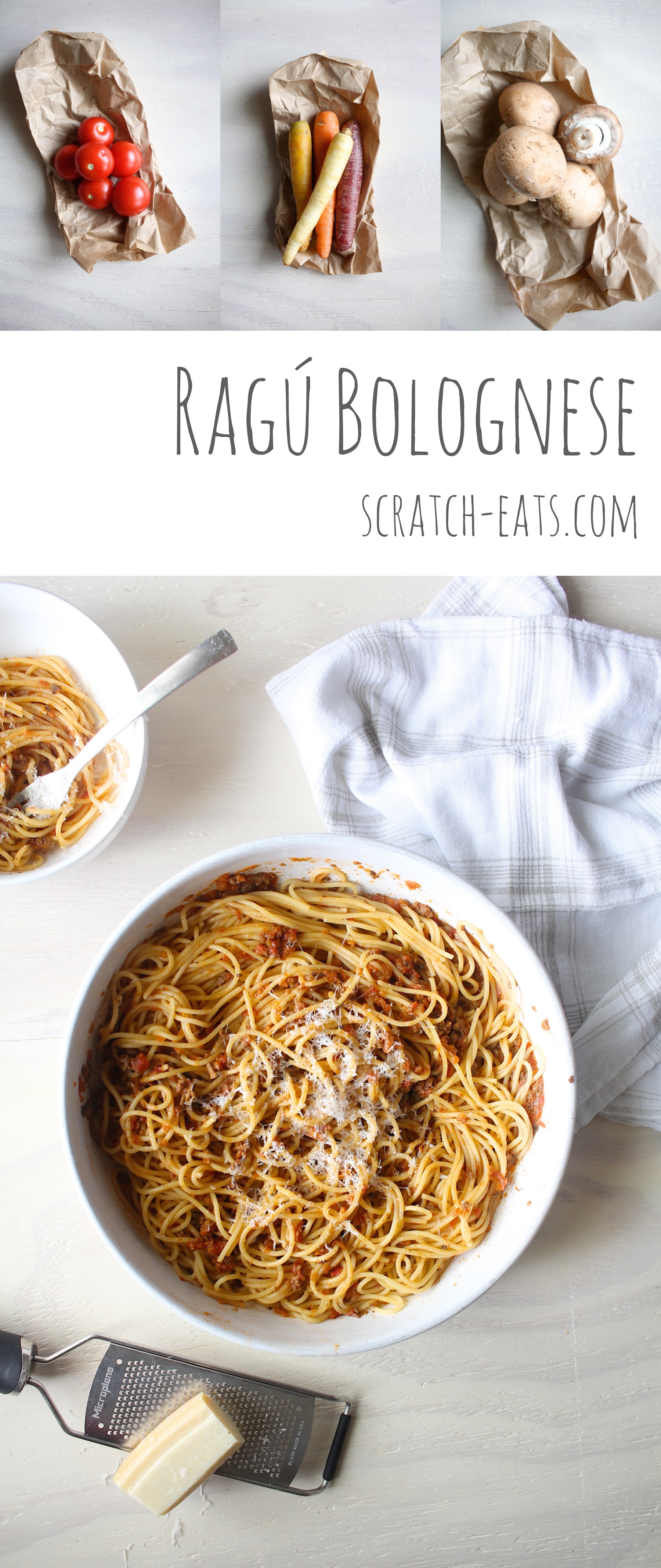
My sister is my best friend. She is also pretty much the best cook I know. When I was in high school and she was in her twenties, I asked her to teach me how to cook. So, being the super cute, thoughtful, overachiever that she is, she made me a binder full of her favorite recipes with hand embroidered a cover and I still refer to those recipes often. One recipe I’ve used countless times is her Ragú Bolognese.
This stuff is amazing. It goes with any shape of pasta (though the wider the better, imo), and oh good gravy, it makes the best lasagna. And seriously, it’s so delicious, I just like to eat it off of a spoon while it simmers. You know, all in the name of testing for doneness …
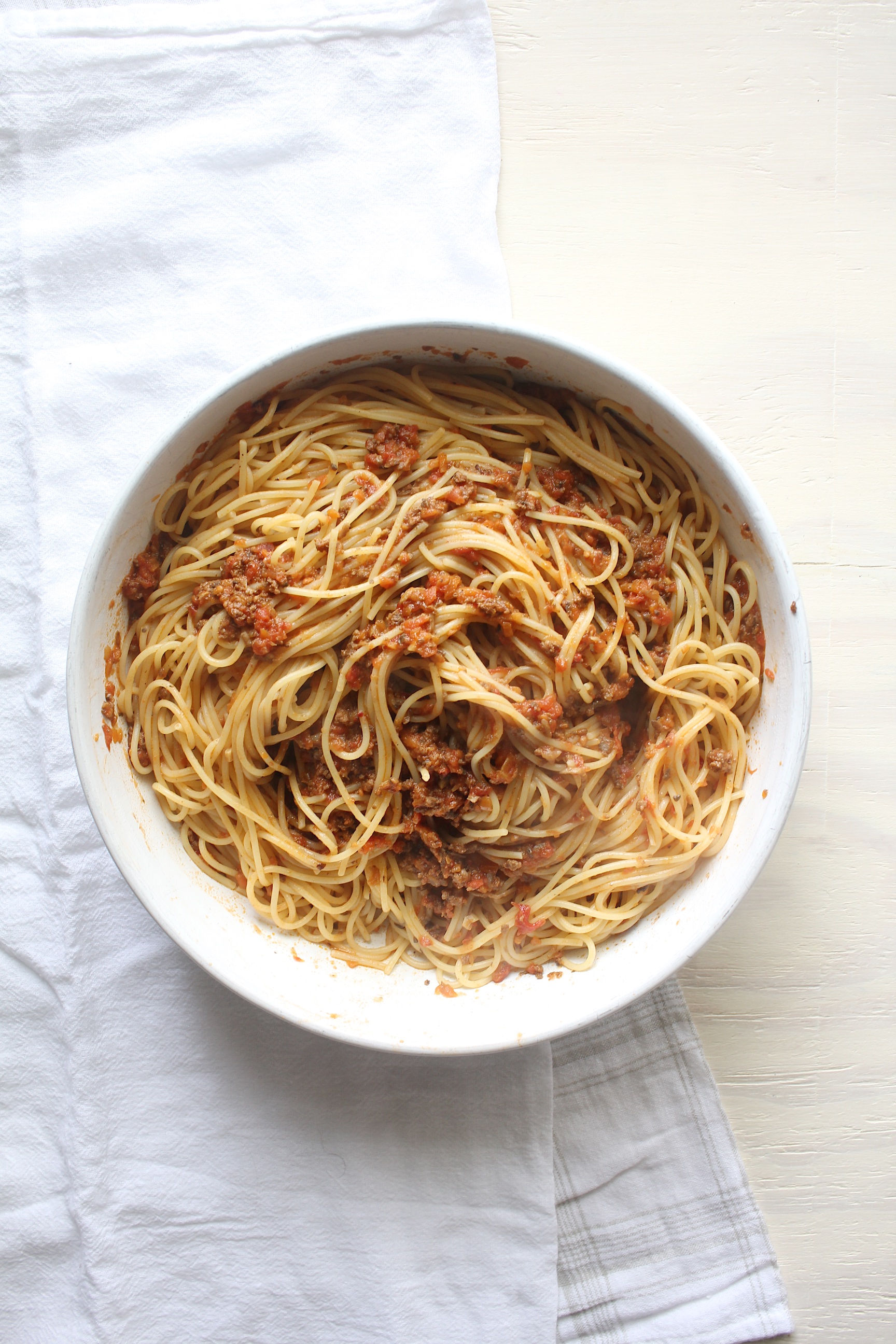
I’ve strayed a little from the recipe my sister gave me all of those years ago, but not too much. The biggest difference is the amount of vegetables I use, and I’ve added mushrooms. They just add this depth of flavor and a velvety texture to the finished sauce.
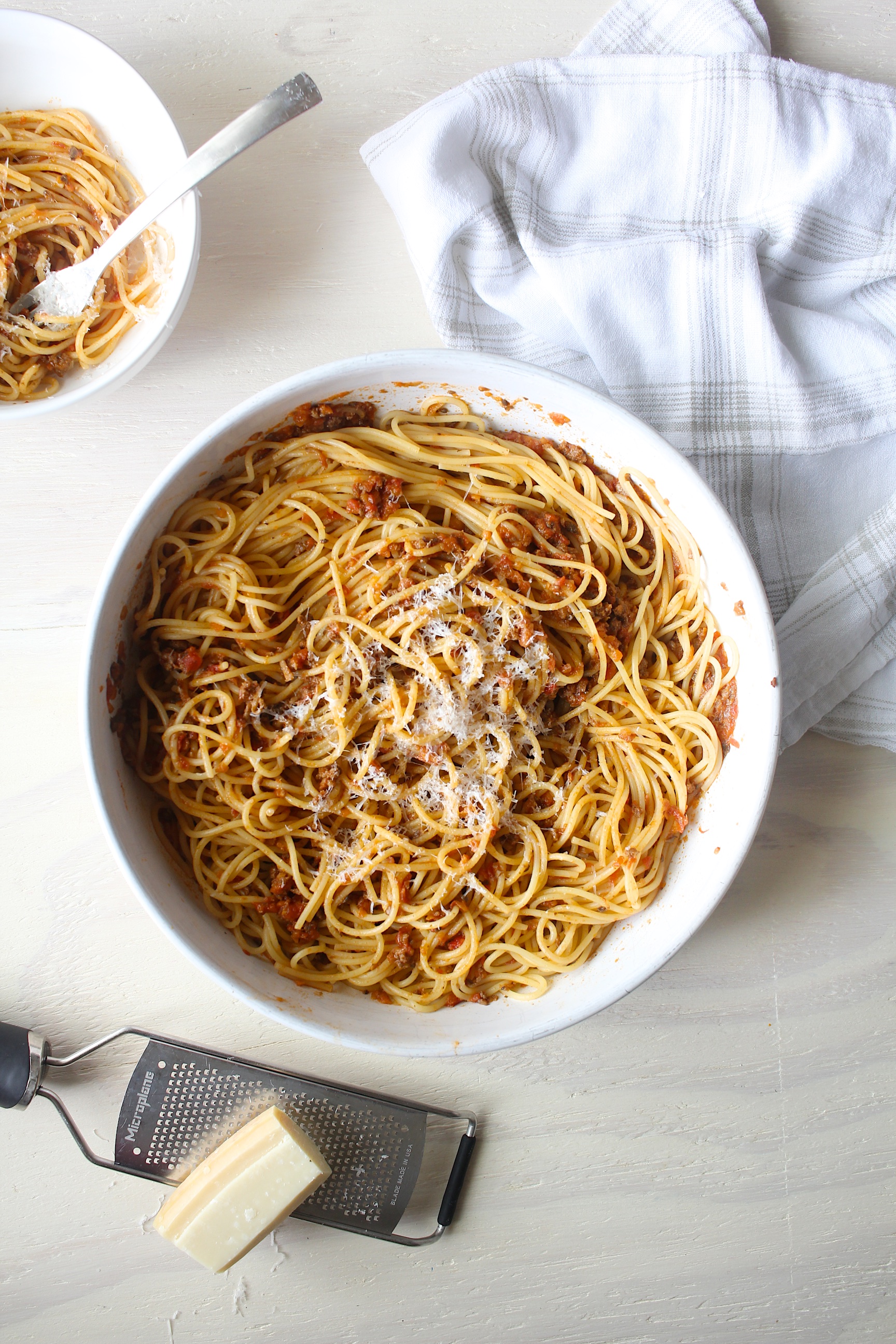 One note, I don’t eat a lot of beef. But when I do, I use local, grassfed, organic beef (and dairy). I know that sounds really pretentious, but let’s think on it for a second. Cows have been grazing on grass and munching to their hearts content for centuries. That’s their natural diet. It wasn’t until the last century that we started cramming them into feedlots and fed them a completely foreign substance (GMO corn) that their bodies can’t digest, and we slaughter just before they’d naturally die from their dietary issues anyway. It’s sad and I don’t want to support that. But more than a moral issue, the nutritional profile of grassfed vs. feedlot beef is alarming. Now, I’m not a nutritionist, but I suppose the fact that the facts are so obvious to simple ol’ me should mean something to everyone else. Even I understand this (from the foodmatters website):
One note, I don’t eat a lot of beef. But when I do, I use local, grassfed, organic beef (and dairy). I know that sounds really pretentious, but let’s think on it for a second. Cows have been grazing on grass and munching to their hearts content for centuries. That’s their natural diet. It wasn’t until the last century that we started cramming them into feedlots and fed them a completely foreign substance (GMO corn) that their bodies can’t digest, and we slaughter just before they’d naturally die from their dietary issues anyway. It’s sad and I don’t want to support that. But more than a moral issue, the nutritional profile of grassfed vs. feedlot beef is alarming. Now, I’m not a nutritionist, but I suppose the fact that the facts are so obvious to simple ol’ me should mean something to everyone else. Even I understand this (from the foodmatters website):
A sirloin steak from a grainfed feedlot steer has more than double the total fat of a similar cut from a grassfed steer. In its less-than-infinite wisdom, however, the USDA continues to grade beef in a way that rewards marbling with intra-muscular fat.
Grassfed beef not only is lower in overall fat and in saturated fat, but it has the added advantage of providing more omega-3 fats. These crucial healthy fats are most plentiful in flaxseeds and fish, and are also found in walnuts, soybeans and in meat from animals that have grazed on omega-3 rich grass.
When cattle are taken off grass, though, and shipped to a feedlot to be fattened on grain, they immediately begin losing the omega-3s they have stored in their tissues. A grassfed steak typically has about twice as many omega-3s as a grainfed steak.
In addition to being higher in healthy omega-3s, meat from pastured cattle is also up to four times higher in vitamin E than meat from feedlot cattle, and much higher in conjugated linoleic acid (CLA), a nutrient associated with lower cancer risk.
Follow the link to the entire article. That quotation is just the tip of the iceberg.
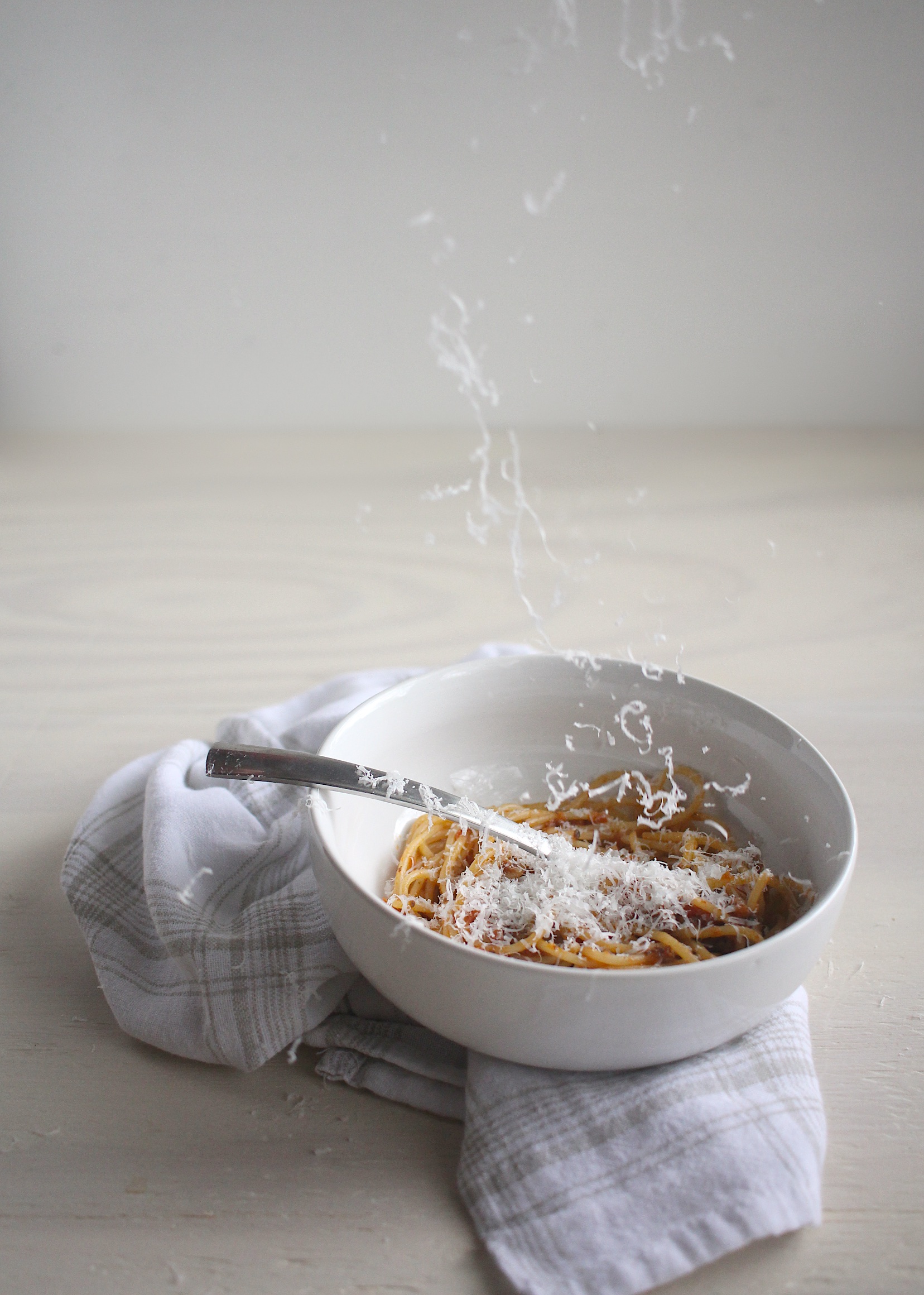
Well, besides nutrition, the flavor is amazing. I pretty much triple the amount of veg in the traditional recipe, and it just makes everything so rich and sweet. And topped with a lot of freshly grated Parmigiano Reggiano, this sauce with knock your socks off.
It’s easy to make but a little time consuming, but it’s makes a huge pot, so freeze in 2~3 cup portions for a quick weeknight dinner. And trust me, you’ll be so glad you did.
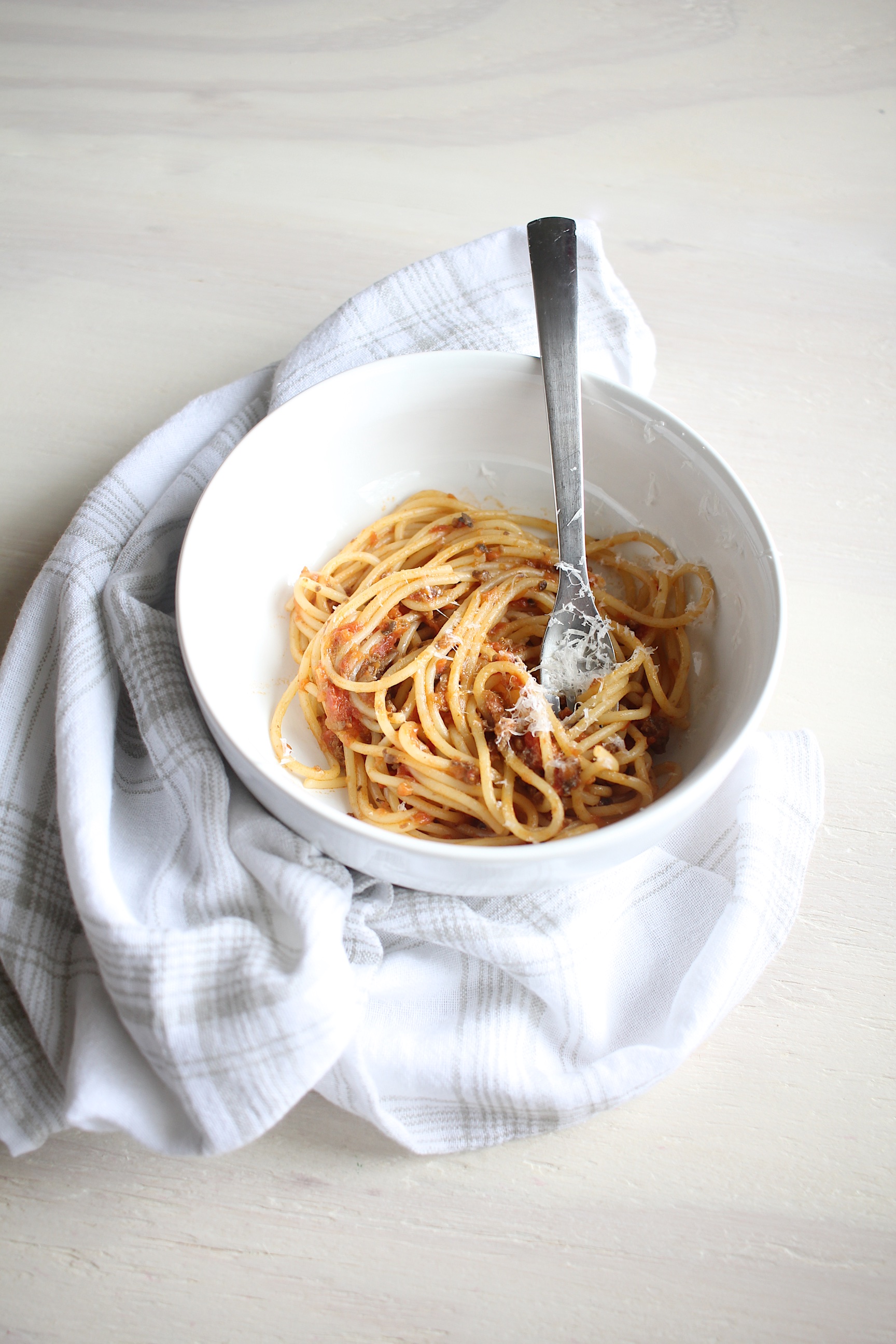
Enjoy!


- 2 tablespoons butter, preferably grassfed and organic
- 5~7 medium carrots, peeled then grated or minced
- 2 onions, grated or minced
- 4 stalks of celery, grated or minced
- 1 pound cremini or white button mushrooms, cleaned, stemmed, and minced*
- 3 cloves of garlic, minced
- 1 lb ground beef, preferably grassfed and organic
- 2-28oz cans whole tomatoes**
- 1 cup whole milk
- fine sea salt & pepper to taste
- Heat a 6 quart heavy bottomed pot over medium heat. Add the butter and swirl around until melted and evenly coating the bottom of the pot. Add the carrots, onions, celery, and mushrooms. Add about 1/2 teaspoon of salt and cook, stirring often. The vegetables will release a lot of liquid. Continue to stir occasionally until the liquid evaporates.
- Run the tomatoes through a food mill with a coarse blade, chop in the food processor to break up the whole tomatoes briefly while leaving some texture, or transfer the contents into a bowl and smash with your fingers until nice and pulpy.
- Once the liquid from the vegetables have evaporated, continue stirring frequently until the vegetables are a golden brown. Add the garlic and stir until fragrant. Add the beef, and while breaking into small pieces***, cook until lightly browned and cooked through. Add the tomatoes and season with salt. Stir occasionally and let simmer for about an hour. Add the milk and simmer for another 30~45 minutes until the meat is very tender and the flavors are married well. Season with salt and pepper to taste.
- Serve tossed with al dente pasta.
- *To clean mushrooms, take a damp paper towel or kitchen towel and rub the surface gently until dirt is removed. Submerging it in water is cause it to absorb excess water and cause a soupy sauce and slimy mushrooms.
- **if you can find San Marzano tomatoes, it's really worth it to use them. The flavor is fantastic.
- ***and easy way to break up ground meat is to use a potato masher.


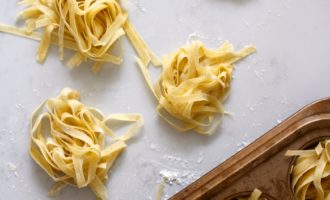
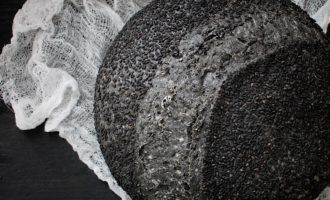
Be the first to comment.